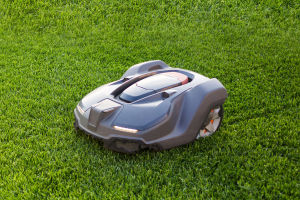In recent years, the field of wind power has experienced significant growth, fueled by technological advancements that enhance efficiency and reduce costs.
As the world focuses on combating climate change and transitioning to clean energy, wind power has become a central force in the global shift towards sustainable energy sources.
We are witnessing unprecedented developments in wind turbine size and efficiency, as well as breakthroughs in control systems and offshore wind technology. These advances are propelling wind power to the forefront of the energy revolution.
Wind Turbine Growth and Efficiency Improvements
Increasing Turbine Capacity
The ongoing trend towards larger wind turbines has dramatically increased their power output. For example, the 26-megawatt offshore wind turbine developed by Electric Group in China has a massive rotor diameter, allowing it to capture wind energy more efficiently.
The larger capacity not only boosts energy production but also reduces costs, such as installation and operational maintenance, by making turbines more economically viable. This trend enables wind power to compete more effectively with traditional energy sources and lays a strong foundation for the large-scale deployment of wind energy.
Innovations in Blade and Tower Technology
Blade Technology
As turbines grow in size, advances in blade technology are crucial to improving efficiency. New composite materials, such as carbon fiber-reinforced polymers (CFRP), have been developed to reduce blade weight while maintaining strength and stiffness.
This allows blades to respond more flexibly to wind speed changes and significantly enhances their aerodynamic performance. Computational simulations also play a key role in optimizing blade design by analyzing airflow under different wind conditions. Some designs even draw inspiration from the aerodynamic structure of bird wings, leading to blades that capture and convert wind energy more effectively.
Tower Technology
To support these larger turbines, towers must be both stronger and more stable. Taller and wider towers are now being built using high-strength steel and concrete, which enhances durability and reduces maintenance costs. Some offshore projects use hybrid tower designs, combining steel and concrete to take advantage of both materials' strengths. Tower manufacturing processes have also advanced, with automation improving production efficiency and quality control, ensuring that towers are safe and reliable over their operational lifespan.
Intelligent Control Systems: A Game-Changer
Smart Control Systems
Modern wind turbines are equipped with highly sophisticated control systems that can monitor various environmental parameters, such as wind speed, temperature, and pressure, in real-time. These systems adjust turbine settings to optimize performance, such as predicting wind speed and adjusting the blade pitch and rotational speed to maximize energy production.
In large wind farms, intelligent control systems also help manage the wake effect between turbines, ensuring that turbines operate in a coordinated manner to minimize energy loss and increase overall efficiency. These smart systems can boost energy output by 10-15% compared to traditional control methods.
Predictive Maintenance and Health Monitoring
As the number of wind turbines increases, maintenance costs become a significant concern. Predictive maintenance and health management technologies use sensors to monitor key turbine components, such as gearboxes and blades, collecting data on vibrations, temperature, and electrical currents. Advanced data analysis techniques, including machine learning, identify potential issues before they lead to major failures, allowing for timely repairs and reducing downtime. This proactive approach has been proven to lower operational costs by 20-30% while improving turbine reliability and availability.
Offshore Wind Power: Breaking New Ground
Floating Foundation Technologies
Offshore wind power has expanded into deeper waters, thanks to the development of floating foundation technologies. These innovations allow turbines to be installed in areas where traditional fixed foundations cannot reach, greatly expanding the potential for offshore wind energy.
Floating platforms are designed to remain stable in challenging marine conditions, with various designs, such as tension-leg, semi-submersible, and spar-buoy foundations, each offering different advantages. These platforms are now being used in several advanced offshore wind projects, where they have shown great stability and adaptability in the face of strong winds, high waves, and ocean currents.
Innovation in Offshore Wind Installation
Offshore wind installation techniques have also seen major advancements, with new vessels and machinery designed to handle larger, heavier components. Self-elevating installation ships, for example, can rapidly establish a stable platform in varying water depths, allowing for more efficient turbine assembly. Additionally, underwater robots equipped with sensors are now used to inspect, maintain, and repair offshore foundations, improving safety and reducing the risk of diving operations.
Furthermore, the integration of offshore wind farms with the electrical grid has been optimized, ensuring that energy produced offshore is efficiently transmitted to land-based power grids.
The Future of Wind Power
The technological advances in wind power, from larger turbines and smarter control systems to breakthroughs in offshore installations, are transforming the energy landscape. These innovations not only increase the efficiency and reliability of wind power but also make it more economically competitive with traditional energy sources. However, challenges remain, such as reducing costs further and addressing integration with existing power grids.
Continued collaboration between governments, industries, and research institutions will be essential to overcoming these obstacles and accelerating the transition to a cleaner, more sustainable energy future. By advancing wind power technology, we are taking a crucial step toward achieving global sustainability goals.
We hope this deep dive into the latest wind power technology has sparked your interest! The future of energy is looking bright with these innovations. What do you think about the rise of wind power and its potential for the future? Let us know your thoughts and questions in the comments below!


